 EDITOR'S PICK
EDITOR'S PICK
Huawei Opens Worlds First 100 Megawatt Charging Station Which Can Charge A Tesla In Just 2 Minutes
05 Sep 2025 | Synopsis
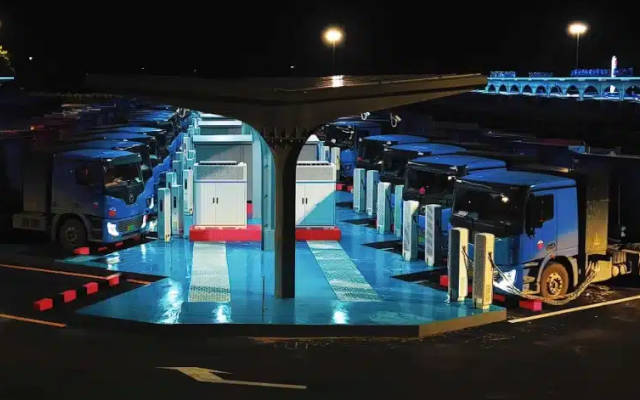 Huawei has launched the world's first 100-megawatt EV charging station in Sichuan, China, capable of charging a Tesla in just two minutes. Built for electric heavy-duty trucks, the $21 million facility spans 11.5 acres, supports 700 vehicles daily, and features ultra-fast chargers up to 1.44 MW. Developed with Yuanqi Xingguang, it marks a major leap in EV infrastructure and positions China at the forefront of ultra-high-capacity charging innovation.
Huawei has launched the world's first 100-megawatt EV charging station in Sichuan, China, capable of charging a Tesla in just two minutes. Built for electric heavy-duty trucks, the $21 million facility spans 11.5 acres, supports 700 vehicles daily, and features ultra-fast chargers up to 1.44 MW. Developed with Yuanqi Xingguang, it marks a major leap in EV infrastructure and positions China at the forefront of ultra-high-capacity charging innovation.Global Shakeup: BYD Leads Global EV Sales As Geely Surpasses Tesla; Hyundai Ranks Seventh
04 Sep 2025 | Synopsis
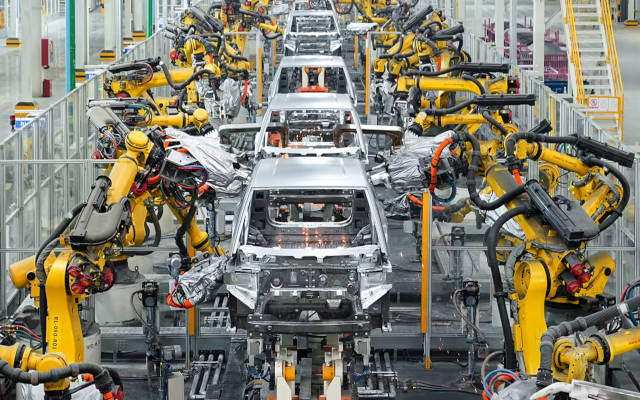 Global EV sales surged nearly 29% from January to July 2025, led by China's BYD with 2.2 million units. Geely overtook Tesla for second place, growing 70% to 1.13 million units, while Tesla's sales fell 13%. Hyundai ranked seventh, boosted by models like the Ioniq 5 and Casper Electric. China dominated with 63% of global EV sales, followed by Europe and North America. Market shifts reflect rising demand for affordable and localized electric vehicles.
Global EV sales surged nearly 29% from January to July 2025, led by China's BYD with 2.2 million units. Geely overtook Tesla for second place, growing 70% to 1.13 million units, while Tesla's sales fell 13%. Hyundai ranked seventh, boosted by models like the Ioniq 5 and Casper Electric. China dominated with 63% of global EV sales, followed by Europe and North America. Market shifts reflect rising demand for affordable and localized electric vehicles.Z4 Hydrogen Aircraft: A Blended-Wing Leap Toward Zero-Emission Aviation
04 Sep 2025 | Synopsis
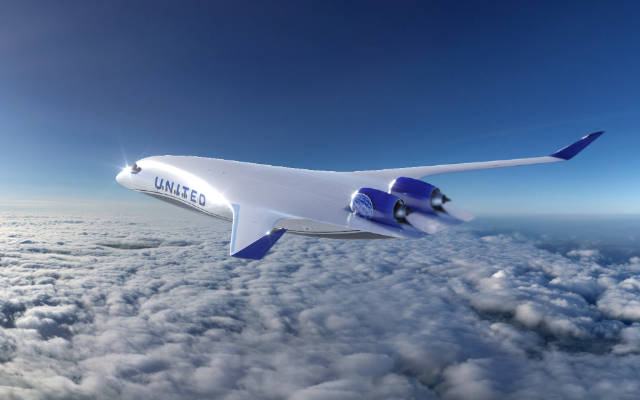 JetZero's Z4 aircraft, developed with SHZ Advanced Technologies, uses cryogenic liquid hydrogen and a blended-wing design to achieve zero-emission flight. Capable of carrying 250 passengers over 9,000 km, it burns hydrogen in modified jet turbines, emitting only water vapor. While infrastructure and safety challenges remain, the Z4 represents a major leap toward sustainable, long-haul aviation.
JetZero's Z4 aircraft, developed with SHZ Advanced Technologies, uses cryogenic liquid hydrogen and a blended-wing design to achieve zero-emission flight. Capable of carrying 250 passengers over 9,000 km, it burns hydrogen in modified jet turbines, emitting only water vapor. While infrastructure and safety challenges remain, the Z4 represents a major leap toward sustainable, long-haul aviation.Sialia 45: Can A 15-meter Electric Boat Be A Cruiser?
04 Sep 2025 | Synopsis
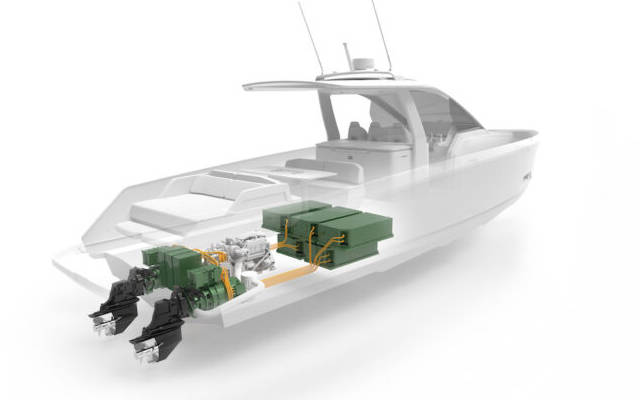 The Sialia 45 is a 15-meter electric cruiser that challenges conventional expectations of range and performance. Built with lightweight carbon fiber and powered by advanced battery systems, it offers silent, zero-emission cruising with luxury features. Designed for day trips or short coastal voyages, it represents a new class of sustainable yachting without sacrificing comfort or style.
The Sialia 45 is a 15-meter electric cruiser that challenges conventional expectations of range and performance. Built with lightweight carbon fiber and powered by advanced battery systems, it offers silent, zero-emission cruising with luxury features. Designed for day trips or short coastal voyages, it represents a new class of sustainable yachting without sacrificing comfort or style.Electronmash: Building Electric Transit in Wartime Ukraine
04 Sep 2025 | Synopsis
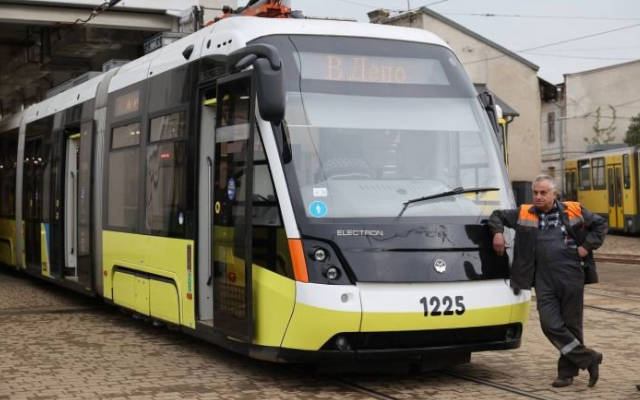 Electronmash, based in Lviv, continues producing electric trams, buses, and trolleybuses despite wartime disruption. Focused on Ukraine's domestic market, it supplies cities with modular, low-floor vehicles tailored to local needs. Though resilient and EU-compatible, it faces stiff competition from European manufacturers like Solaris and VDL. Post-war, it could play a key role in regional electrified transit.
Electronmash, based in Lviv, continues producing electric trams, buses, and trolleybuses despite wartime disruption. Focused on Ukraine's domestic market, it supplies cities with modular, low-floor vehicles tailored to local needs. Though resilient and EU-compatible, it faces stiff competition from European manufacturers like Solaris and VDL. Post-war, it could play a key role in regional electrified transit.
 EVWorld Exclusive
EVWorld Exclusive
Electric Icons in the Making: Audi Concept C vs. Chevrolet Corvette EV
23 Oct 2025 |  Audi's Concept C previews a refined electric GT built on the mature PPE platform, likely arriving by 2026. Chevrolet's Corvette EV promises supercar performance but faces packaging and thermal challenges. Audi is closer to production; Corvette remains in early development. Both reflect divergent strategies in electrifying legacy sports cars, with Audi emphasizing platform maturity and Chevrolet pursuing brand continuity through engineering innovation.
Audi's Concept C previews a refined electric GT built on the mature PPE platform, likely arriving by 2026. Chevrolet's Corvette EV promises supercar performance but faces packaging and thermal challenges. Audi is closer to production; Corvette remains in early development. Both reflect divergent strategies in electrifying legacy sports cars, with Audi emphasizing platform maturity and Chevrolet pursuing brand continuity through engineering innovation.
Electrification Is Not an Oversimplification
23 Oct 2025 |  Despite critiques that the quest for global electrification is "simplistic", the transition is strategic and necessary. Grid upgrades, battery innovation, and tailored policies make electrification viable. Sodium-ion batteries and recycling reduce material risk. Compared to fossil fuels, electrification offers cleaner, safer, and more resilient systems. Complexity demands better design - not delay.
Despite critiques that the quest for global electrification is "simplistic", the transition is strategic and necessary. Grid upgrades, battery innovation, and tailored policies make electrification viable. Sodium-ion batteries and recycling reduce material risk. Compared to fossil fuels, electrification offers cleaner, safer, and more resilient systems. Complexity demands better design - not delay.
What Is the Real Cost to Replace EV Tires?
23 Oct 2025 |  A recent BGR article overstates EV tire costs and ignores fuel savings, regenerative braking, and tire tech advances. Most EV drivers spend ~$2,100–$2,700 on tires over 100,000 miles - not $3,600. EVs save thousands in fuel and benefit from smoother wear profiles. Brands like Goodyear and Michelin now offer EV-specific tires with longer life and better efficiency. The article lacks context and deserves correction.
A recent BGR article overstates EV tire costs and ignores fuel savings, regenerative braking, and tire tech advances. Most EV drivers spend ~$2,100–$2,700 on tires over 100,000 miles - not $3,600. EVs save thousands in fuel and benefit from smoother wear profiles. Brands like Goodyear and Michelin now offer EV-specific tires with longer life and better efficiency. The article lacks context and deserves correction.
The Battery Divide: Strategic Choices in the Global Race to Electrify Mobility
23 Oct 2025 |  Toyota's "1 EV = 90 hybrids" logic reflects lithium scarcity, but sodium-ion batteries challenge that premise. Sodium offers low-cost, abundant chemistry for short-range EVs, decoupling electrification from lithium dependence. National policy shapes adoption: Europe favors full EVs, the U.S. subsidizes hybrids, and emerging markets seek pragmatic solutions. The battery divide is not just technical - it's strategic, reshaping the future of mobility.
Toyota's "1 EV = 90 hybrids" logic reflects lithium scarcity, but sodium-ion batteries challenge that premise. Sodium offers low-cost, abundant chemistry for short-range EVs, decoupling electrification from lithium dependence. National policy shapes adoption: Europe favors full EVs, the U.S. subsidizes hybrids, and emerging markets seek pragmatic solutions. The battery divide is not just technical - it's strategic, reshaping the future of mobility.
Irizar Expands Electric Bus Lineup with Global Reach and Long-Range Performance
22 Oct 2025 |  Irizar has launched two new electric buses - the ie bus and i3 Normal Floor - with over 450 km range, advanced safety systems, and modular lithium-ion batteries. The Spanish manufacturer has delivered over 1,000 electric buses globally since 2014. The new models are lighter, seat up to 53 passengers, and meet European safety and cybersecurity standards. With deployments in Europe, Latin America, and Oceania, Irizar is positioned as a global leader in zero-emission transit.
Irizar has launched two new electric buses - the ie bus and i3 Normal Floor - with over 450 km range, advanced safety systems, and modular lithium-ion batteries. The Spanish manufacturer has delivered over 1,000 electric buses globally since 2014. The new models are lighter, seat up to 53 passengers, and meet European safety and cybersecurity standards. With deployments in Europe, Latin America, and Oceania, Irizar is positioned as a global leader in zero-emission transit.
SEARCH RSSTREAM
 75 New Postings In Past 24 Hours
75 New Postings In Past 24 Hours
Category:mobility
Region:AsiaPacific
Date:23 Oct 2025
Category:mobility
Region:Europe
Date:23 Oct 2025
Category:mobility
Region:AsiaPacific
Date:23 Oct 2025
Category:mobility
Region:Europe
Date:23 Oct 2025
Category:mobility
Region:Europe
Date:23 Oct 2025
Category:energy
Region:NoAmerica
Date:23 Oct 2025
Category:finance
Region:NoAmerica
Date:23 Oct 2025
Category:energy
Region:AsiaPacific
Date:23 Oct 2025
Category:mobility
Region:Europe
Date:23 Oct 2025
Category:mobility
Region:NoAmerica
Date:23 Oct 2025
Category:mobility
Region:NoAmerica
Date:23 Oct 2025
Category:finance
Region:NoAmerica
Date:23 Oct 2025
Category:mobility
Region:NoAmerica
Date:23 Oct 2025
Category:policy
Region:NoAmerica
Date:23 Oct 2025
Category:mobility
Region:Europe
Date:23 Oct 2025
Category:mobility
Region:NoAmerica
Date:23 Oct 2025
Category:energy
Region:IndoAsia
Date:23 Oct 2025
Category:autonomy
Region:AsiaPacific
Date:23 Oct 2025
Category:mobility
Region:IndoAsia
Date:23 Oct 2025
Category:mobility
Region:NoAmerica
Date:23 Oct 2025
